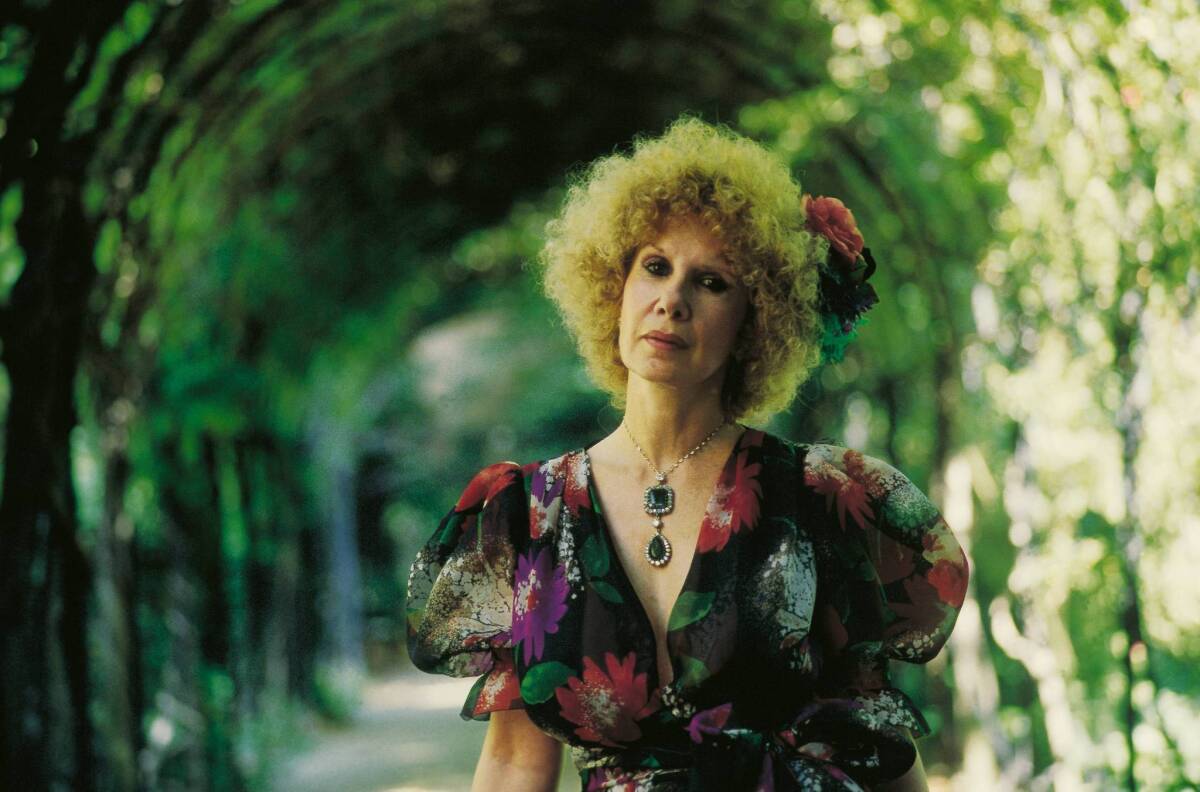Duchess of Alba dies at 88; free-spirited Spanish aristocrat

Spain’s richest and most-titled aristocrat, the flamboyant Duchess of Alba, who was once a childhood playmate of Britain’s queen and went on to become one of Europe’s most eccentric fashionistas, died Thursday at her home in Seville. She was 88.
Her full name was Doña Maria del Rosario Cayetana Alfonsa Victoria Eugenia Francisca Fitz-James Stuart y de Silva, but she was known in Spain simply as “La Duquesa” or “Cayetana.” She held the most titles of any aristocrat alive (57), according to the Guinness Book of World Records. She was said to be the only person on Earth who is not required, by etiquette, to bow before the pope.
Many Spaniards’ most recent and lasting memory of their beloved duchess was when she flung off her shoes, wiggled her hips and danced a flamenco step, her arms flailing above her frizzy white bob, in front of the paparazzi at her 2011 wedding to her third husband, Alfonso Diez, a civil servant 25 years her junior.
“It often seems that I’m the older of the two,” Diez told Vanity Fair afterward. The marriage was opposed by her six children, as well as Spain’s then-King Juan Carlos, but embraced by many Spaniards for its entertainment value. One of her previous husbands had been a priest.
Before Paris Hilton, there was the Duchess of Alba. Famous for being famous, she regularly graced the covers of Hola! magazine and other Spanish gossip tabloids, one of which in 2011 published decades-old topless photos of her on a beach on the island of Ibiza. She was dubbed “the rebel noble,” for her bohemian dress style, squeaky high-pitched voice and levity amid the confines of high society. Her antics endeared her to Spaniards, many of whom have otherwise soured on Spain’s ruling elites amid an economic crisis and 23% unemployment.
Born in Madrid on March 28, 1926, the duchess was an only child in one of Europe’s oldest noble families, the House of Alba. Her father was Spain’s ambassador to Britain during World War II. The family owns so much land that Spaniards like to say the duchess could walk the length and breadth of the country without setting foot off her own property. The Spanish king was her godfather.
She spent her earliest years in exile, first in Paris and then in London, while Spain underwent political turmoil and civil war through the late 1930s. In London, she befriended the future Queen Elizabeth II, a distant relative; the two were born within weeks of each other.
Tracing her lineage back to the House of Stuart, the duchess was said to have been a contender for the Scottish throne if Scotland had voted this past September to break away from the United Kingdom and adopt its own monarch.
She returned to Spain from exile as a teenager and grew up in lavish palaces, amassing one of the world’s largest and most valuable private art collections, including works by Titian, Goya, Velazquez and Rembrandt, and rare documents including Christopher Columbus’ first map of the Americas. A beauty in her youth, she notoriously turned down an invitation to pose for Pablo Picasso and missed a chance to become his muse. She’s believed to have had many plastic surgeries later in life.
Her first husband was Don Luis Martínez de Irujo y Artázcoz, a naval officer and son of a Spanish duke. The New York Times called their 1947 wedding “the most expensive wedding of the world.” On their six-month honeymoon, the couple visited Hollywood, where the duchess later famously recalled meeting Marilyn Monroe, who “did not make much of an impression on me,” she said, though she called Marlene Dietrich “a goddess.”
In Spain, the duchess hosted American celebrities like Audrey Hepburn and Jackie Kennedy. In 1959, she installed a fashion runway in one of her palaces in Madrid, to host a fashion show by the French designer Yves Saint Laurent. Her own style tended toward the bohemian.
Her second husband was a defrocked Jesuit priest, Jesus Aguirre y Ortiz de Zarate, to whom the duchess had gone to confession. They married in 1972, six years after she was widowed from her first husband. Aguirre also died, in 2001.
She is survived by her husband Diez and six children, to whom she bequeathed her estate, which Spanish media estimated at up to $5 billion. Her title now defaults to her eldest son, Carlos Fitz-James Stuart, about whom the duchess wrote in her 2013 autobiography, “What Life Has Taught Me”: “Carlos is conservative; he will protect the title.”
The duchess died early Thursday at the 16th century Dueñas Palace, where she lived in Seville, the city’s mayor, Juan Ignacio Zoido, said. She had been hospitalized earlier in the week with pneumonia.
Her coffin was put on display Thursday in Seville’s town hall, where thousands of relatives, public officials and ordinary Spaniards filed past. Local officials declared a day of mourning. A funeral Mass was scheduled for Friday afternoon at Seville’s grand cathedral.
“Cayetana always had Seville in her heart and for this reason she will always remain in Seville’s heart,” Mayor Zoido tweeted Thursday. “May she rest in peace.”
The duchess’ body would be cremated, he said, and her ashes placed in one of the cathedral’s side altars, dedicated to Cristo de los Gitanos, or Christ of the Gypsies -- a patron saint of flamenco dance.
Special correspondent Frayer reported from Madrid.
More to Read
Start your day right
Sign up for Essential California for the L.A. Times biggest news, features and recommendations in your inbox six days a week.
You may occasionally receive promotional content from the Los Angeles Times.






